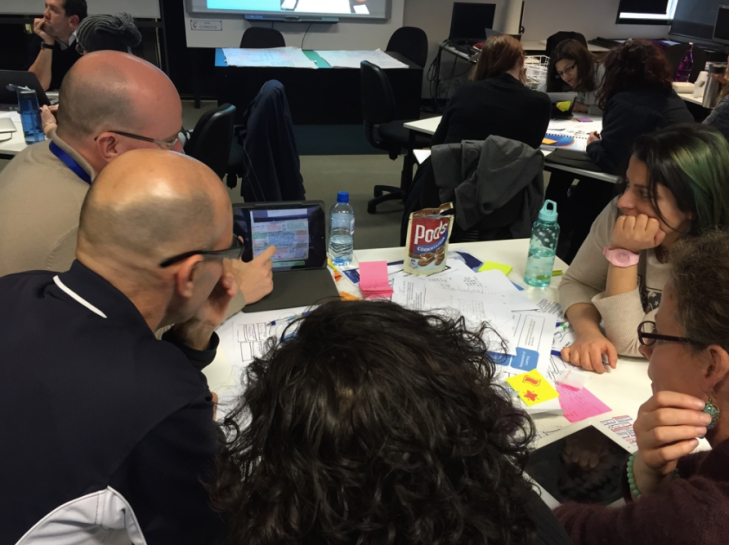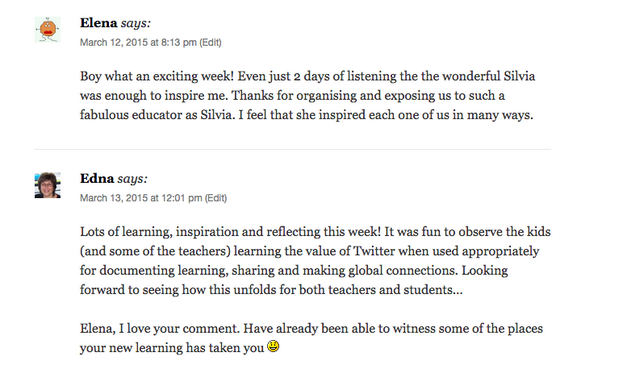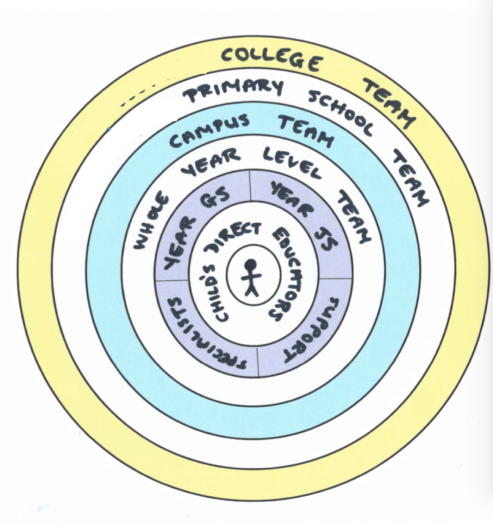What if collaborative meetings always led to action?
Starting with the end in mind, our team leaders considered what they would like participants to FEEL, THINK, BE, HAVE, SAY and DO after their collaborative meetings…

The consensus was for people to come out feeling motivated, empowered and challenged, with a sense of purpose and shared vision, eager to move forward with the implementation of new ideas. (Meeting Wise!)

So…
How might we create a culture of productive collaboration?
Team leaders reflected on the culture of their teams by using match sticks to represent their team dynamics, which proved to be both an interesting exercise in visualisation and a powerful reality check. (Thanks, @kjinquiry!)

The next step was to consider the conditions that might contribute towards a productive collaborative culture. Which of these are most important for all team members? How would you prioritise these and what would you add?
- having a positive image of the child
- being comfortable with cognitive dissonance
- having autonomy/ a sense of agency
- feeling safe
- assuming positive intentions of other team members
- having a clear purpose
- contributing actively and equitably
- being willing to grow, see things in new ways and open to change
- having knowledge and understanding of pedagogy
And then…
How do we develop a culture of productive collaboration within our teams?
Some of the ideas that were shared:
- Create an essential agreement and agree on meeting norms
- Acknowledge mistakes and share insecurities
- Celebrate successes
- Constantly reflect – individually and as a group
- Listen to and acknowledge all perspectives
- Ensure agenda is available in advance and input is open to everyone
- Celebrate the zone of discomfort and ask people to try things
- Be non judgemental
- Develop trust and respect so tensions are easily talked through
- Listen to each other
- Always focus on the child
- Ensure everyone has a voice
- Compromise, affirm, reassure and encourage
- Allow time. Be creative in finding time!
- Keep asking questions – Why? What if? How might we?
- Be flexible
- Try to understand where everyone is coming from
- Take turns to plan and facilitate meetings
- Bring others/ experts into the planning and reflection process
- Be available as much as possible
- Know when to lead and when to follow
And also…
How do we ensure our meetings are valuable?
Team leaders jotted down things they currently do in meetings and then evaluated those against a list of criteria that make meetings really valuable…
Collaborative planning and reflection meetings should: (adapted from IB PYP standards and practices)
- take place regularly and systematically.
- address all the essential elements of the PYP
- be based on agreed expectations for student learning.
- consider the different learning needs of students.
- address horizontal and vertical articulation.
- include analysing and responding to student learning eg looking for misconceptions and patterns
- involve teachers modelling the attributes of the learner profile.
- ensure that our practice aligns with our learning principles.
- take an inquiry stance, eg through framing inquiry questions.
- consider the development of conceptual understandings.
- include planning provocations, addressing our agreed purpose and criteria
These are some of the wonderings that came up as a result:
- Who needs to be at meetings and how often should they take place?
- Are there other ways to deal with administrative matters, outside of meeting time?
- If we spent time setting the tone for our collaborative meetings, would they be more productive?
- How can we support teams which are not functioning productively?
- How can we work around timetable constraints?
- How can we share what we value about culture and content with our teams?
- How might we address challenges in a solution focussed manner?
- How can we get people to step up to facilitate a meeting?
- What kinds of student data should we bring to meetings?
And coming full circle to where we started…
What action will this collaborative meeting lead to?
What will our team leaders (and you, the reader) FEEL, THINK, BE, HAVE, SAY and DO as a result?














